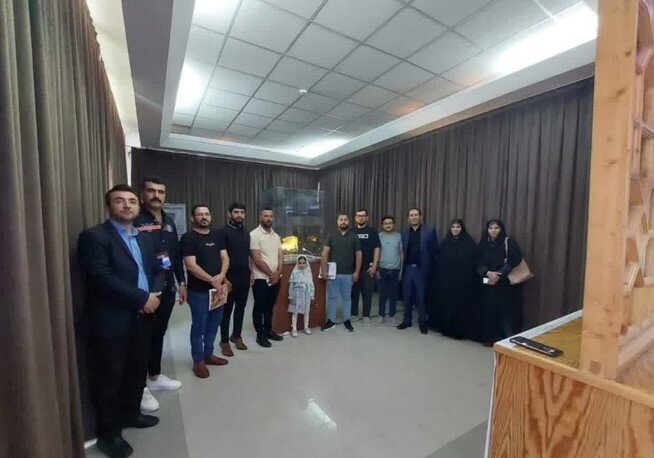International students delve into Iran’s heritage at Urmia Museum

TEHRAN - Overseas students from Urmia University have visited the Hasanlu Gold Bowl, one of the most enigmatic ancient treasures of Iran, currently on display at the Urmia Museum.
During their visit, on Thursday, the students also toured other sections of the museum, guided by a museum docent, and explored the extensive exhibits of what is considered as one of the richest museum in the country.
The Hasanlu Gold Cup, usually housed at the National Museum of Iran, is being showcased at the Archaeological Museum of Urmia for two weeks in celebration of Cultural Heritage Week and International Museum Day (May 18).
According to the provincial officials, The Urmia Museum, one of Iran’s richest and largest museums, houses 25,000 historical objects. However, due to space limitations, only 10 to 15 percent of these artifacts are on display at any given time.
Hasanlu Gold Bowl was unearthed by Emamqoli Mohammadi Hasanluei from the ruins of a burned ancient building at Tepe Hasanlu, near Naghadeh and Lake Urmia in West Azarbaijan province.
Engraved with images of gods and rituals, a stone cylinder with gold caps, a figurine of laminated ivory, and a sword hilt with a bronze guard, the Gold Bowl of Hasanlu was discovered almost 3,000 years later near the skeletal hand of an individual who had been fleeing with it at the end of the 9th century BC.
The bowl quickly became recognized as a unique and significant example of ancient goldsmithing, showcasing a high degree of technical mastery and a wide range of ornamental motifs that provide insight into the religious and mythological traditions of its time.
Over the years, the bowl has been discussed in countless scholarly books and articles, including an analysis by Marie-Therese Barrelet (1911-1996), who deemed it one of the greatest finds of the decade.
Evidence suggests that when the citadel of Hasanlu was under violent siege, some soldiers managed to penetrate it, grabbing valuable treasures, including the prized gold bowl. The hypothesis suggests that the building collapsed due to fire, crushing the warriors and their possessions under layers of debris. They remained there for around 3,000 years until the groundbreaking discovery in 1958.
Due to the lack of written records, very little is known about the inhabitants of Hasanlu and their invaders.
Among the most important objects uncovered at Hasanlu were an unusually decorated silver bowl, several iron garment pins headed by bronze lions, a solid gold bowl, a knife handle with gold cloisonné, and two hollow bronze horse heads that served to hold liquids.
Leave a Comment